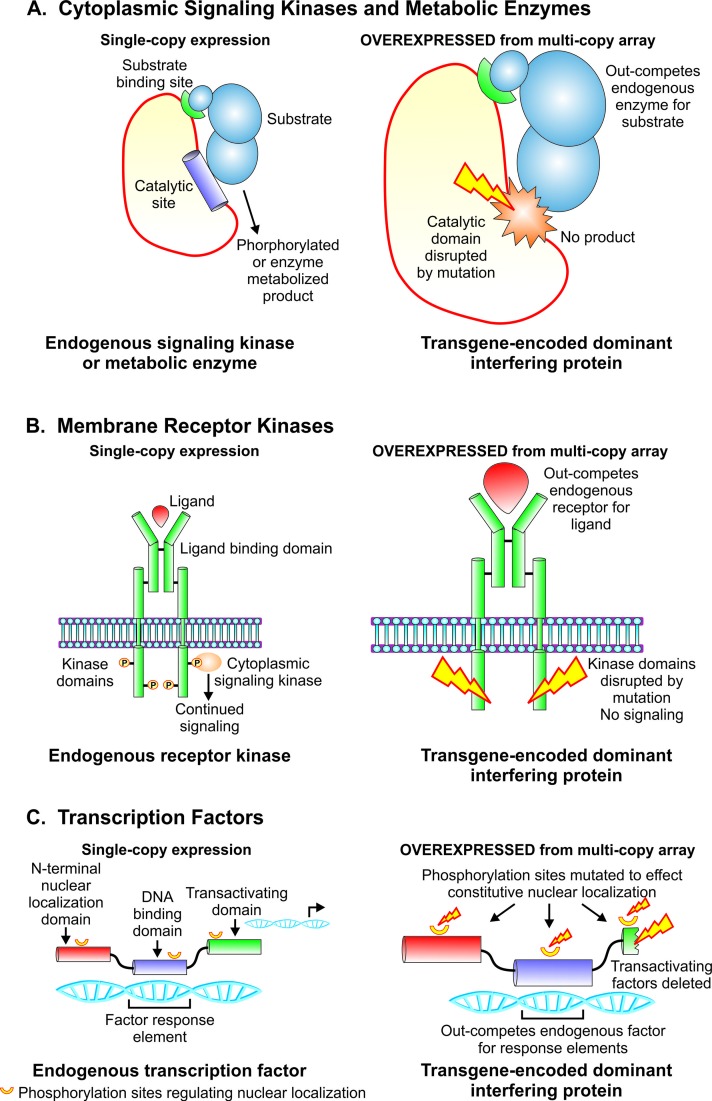Figure 2.
Strategies for creating dominant interfering transgene constructs to study functions of catalytic, signaling, and gene regulatory proteins. (A). Strategy for dominant interfering transgenes targeting functions of metabolic enzymes and cytoplasmic signaling kinases. Overexpression of mutant construct with intact substrate binding domain and catalytic site disrupted by mutation serves to outcompete endogenous gene product for substrate while yielding no phosphorylated or enzyme metabolized product. (B). Design of dominant interfering transgenes targeting functions of membrane receptor kinases. Ablation of the kinase domain by mutation, an intact ligand binding domain and overexpression combine to out-compete the endogenous receptor kinase for ligand while failing to phosphorylate downstream cytoplasmic signaling elements. (C). Design of dominant interfering transgenes targeting the action of transcription factors. Overexpression of a mutant transgene encoding an intact DNA binding domain, mutations in phosphorylation sites to effect constitutive nuclear localization, and disruption of the transactivating domain serve to outcompete the endogenous transcription factor for genomic response elements while failing to execute gene regulatory function.

